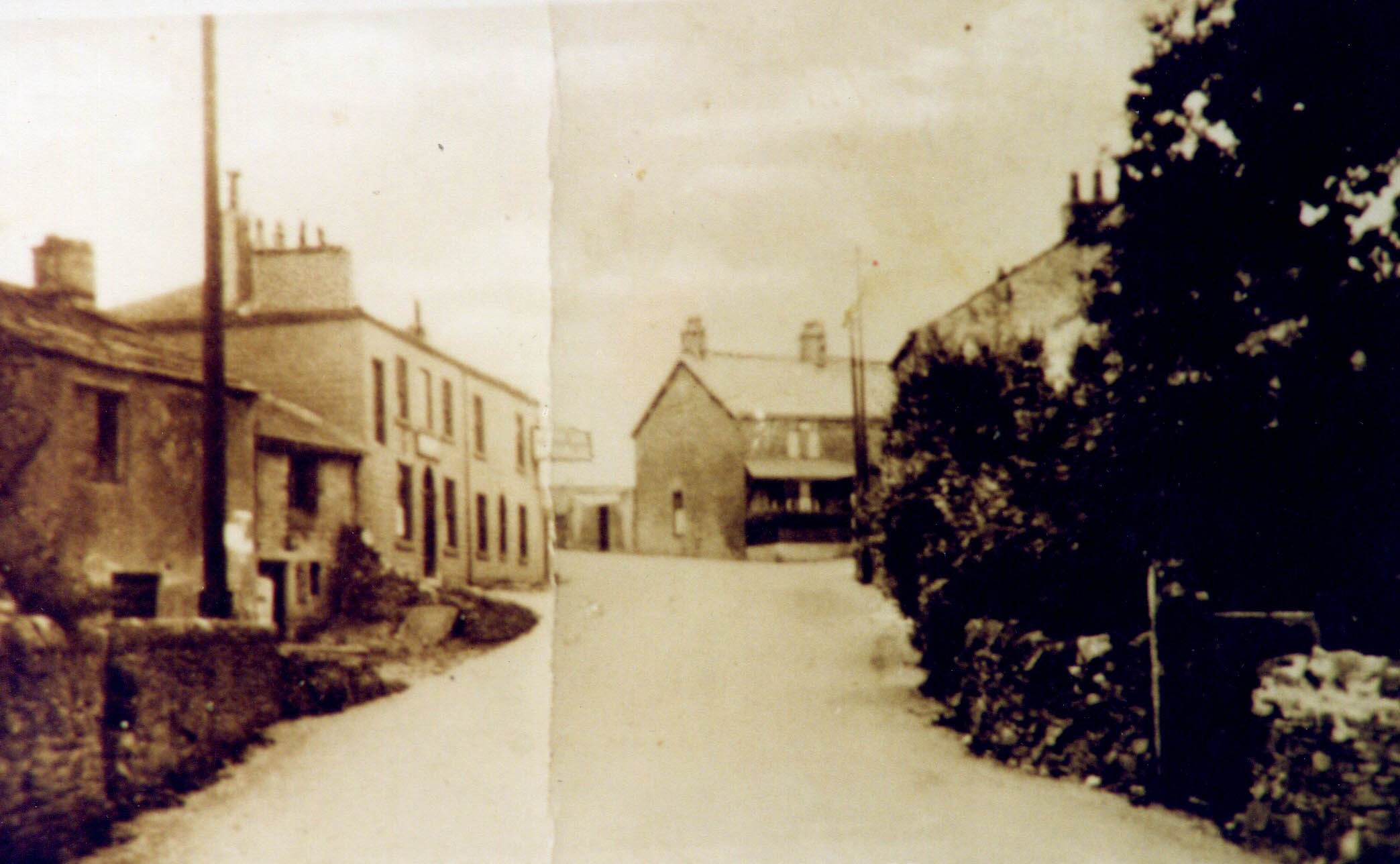 |
The Parish of Tockholes |
 |
TOCKHOLES
A BRIEF HISTORY

Chapel, Shirley Gardens & Victoria Terrace
For such a small village, Tockholes has had a long and chequered history which to some degree reflects the fortunes and failures of the region as a whole. The village of today is only a shadow of its former self as it is basically a place to live rather than work as few farms are left and there is no industry, but once it was a thriving busy place with three times as many villagers as today.
The population was at its highest in 1811 with 1261 residents. Today there are about 450. From 1838 to 1903 two cotton mills employed some 300 people between them, but both buildings are long since demolished. A generation or so further back Villagers earned their livelihoods from mining, silk weaving, handloom weaving, spinning and dyeing. A number of interesting place names still exist which take their titles from these industries – Coal Pit Lane, Cotton Hall, Duck Hall, Silk Hall, Engine Brow, Engine Bottoms.
During the Civil War a field near the Church was the site of a skirmish between the Parliamentarians and Royalists and in 1833 the corpses of about 40 horses were unearthed, along with metal buttons. Musket balls, cannon balls and other military items have cropped up from time to time all over this part of the village but much of the detail of the skirmish is unclear.
In the 18th and early 19th centuries the village relied heavily of handloom weaving. Technology changed the Industry quickly and in 1826 steam powered looms were built in Blackburn which were quickly smashed by rioters who feared for their livelihoods, but progress could not be halted and soon mills began to spring up all over the County. The Tockholes handloom weavers were reduced to poverty and many left to work in the Town mills.
In the mid 19th century Liverpool Corporation began to acquire land in the Roddlesworth Valley for an elaborate scheme to catch water and reserve it in reservoirs linked by a water course system. By 1903 the scheme and its impact on the village was far reaching. Most of the moorland and all of Roddlesworth Valley had been taken, and many of the old farmsteads including the old manor house of Hollinshead and all its tenanted properties were demolished in order to prevent pollution of the water.
By the time of the First World War the village was in decline. Most villagers had to travel to work in Darwen or Blackburn and until 1928, when a bus service was started, the village was very isolated. It became an inconvenient place to live and the population began to decline, the little cottages were thought of as slums compared to the tidy terraces of the towns. This situation lasted for many years, mainly because of two factors - none of the village had piped water and hardly any of it had proper sanitation. The local wells were still used by the villagers as they always had been, but by now this practice was behind the times.
Incredibly this situation lasted until the mid 1960's and proper sanitation did not arrive until the early 1970's. The lack of these two essentials in a way preserved the village from development and today it is much the same as it was 100 years ago. Our ancestors would have no difficulty in still finding their way around. The once slum cottages are now tastefully restored and some twenty five buildings are Grade II listed. It is now a desirable place to live. The isolation which once worked against the village has helped preserve and promote it.

Main road through Tockholes, c. 1935
Photographs and text by kind permission and © of Judith Jacklin, 2012
References:
Nightingale, B. (Benjamin), “Two Centuries and a Half of Nonconformity in Tockholes"
W. A. Abram “A History of Blackburn Town & Parish”
See also Wikipedia for more detailed information
| Tockholes Home & Contents | ©Lancashire OnLine Parish Clerks | Lancashire Home |